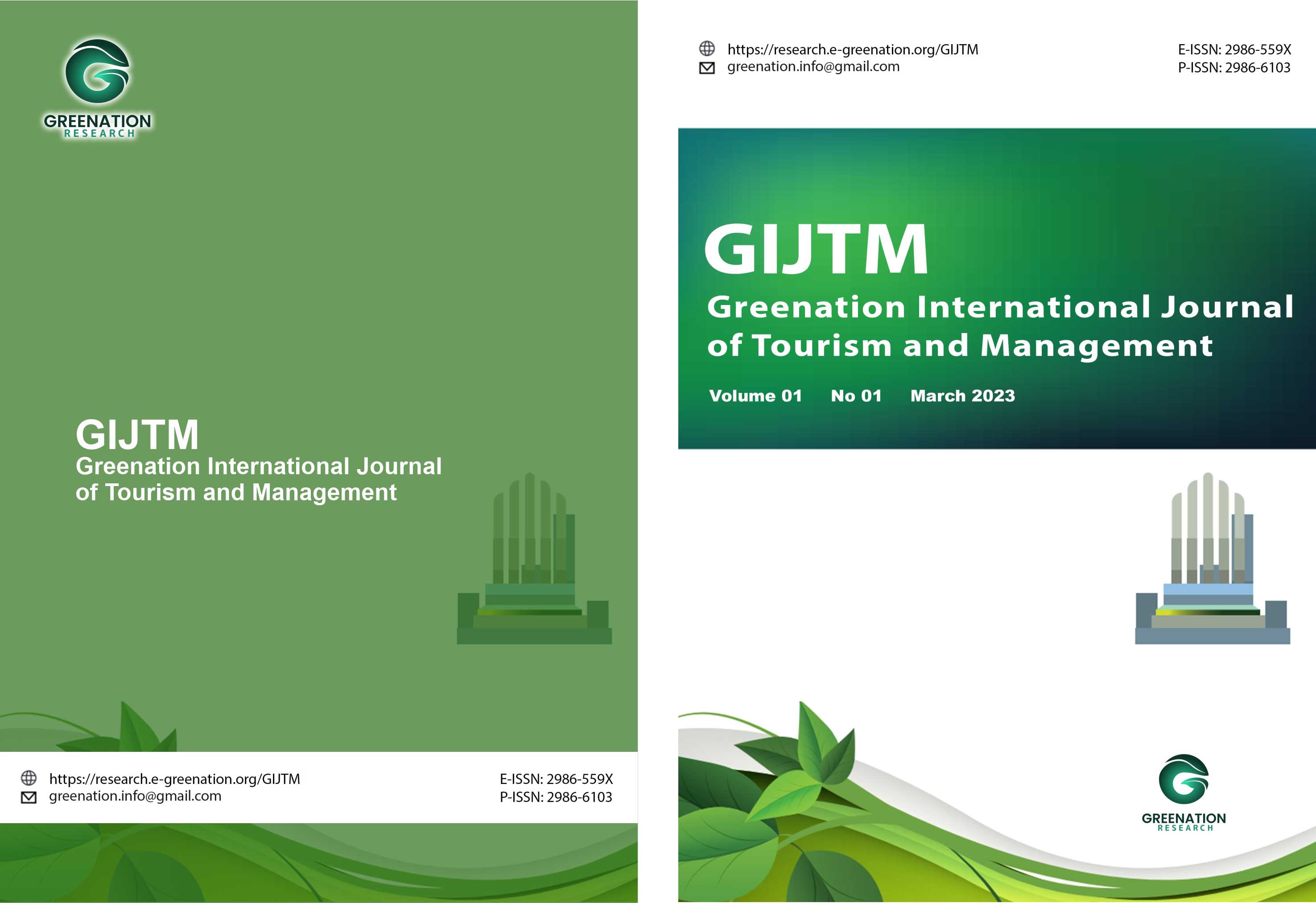The Correlation Between Employees Skill Level and Rewards They Receive Greatly Impacts Their Overall Performance
DOI:
https://doi.org/10.38035/gijtm.v2i1.155Keywords:
Compensation, Competence, Employee PerformanceAbstract
The objective of this study, conducted within the Marketing Division of PT Coca Cola Amatil Indonesia, is to examine the impact of Compensation and Competence on employee performance. The research method employed for this study included both descriptive and explanatory surveys. The analysis focused specifically on employees within the Marketing Division of PT Coca Cola Amatil Indonesia, with a sample size of 50 individuals. The purpose of this investigation was to establish a causal relationship, while the time horizon considered was cross-sectional. Upon analyzing the findings, it was revealed that employees within the Marketing Division of PT Coca Cola Amatil Indonesia received a satisfactory level of compensation. Additionally, their competence was deemed suitable and sufficient to meet the demands of their roles. Notably, the performance of these individuals within the Marketing Division was found to be exceptionally high. Furthermore, it was determined that both compensation and competence had a simultaneous impact on employee performance. It is important to highlight that the influence of compensation on performance outweighs that of competency. Enhancing employee performance is of utmost importance, as it is greatly influenced by the level of compensation they receive. Keeping this in mind, it is advisable to ensure that the Marketing Division of PT Coca Cola Amatil Indonesia receives compensation that adheres to regulations, including an augmentation of supplementary benefits. This will enable them to execute their responsibilities in a more proficient and polished manner
References
Ahmadi, H, Abu and Widodo, Supriyono. 2000. Psychology of Learning. Jakarta: PT Rineka Cipta
Aritonang, Keke T. 2005. Work Compensation, Teacher Work Discipline and Teacher Performance of BPK Penabur Christian Junior High School. Journal of Penabur Education. No. 4 Year IV. Jakarta
Basri, Rivai. 2005. Performance Appraisal. First Printing, PT Raja Grafindo Persada, Jakarta.
Bernadin H. John Joyce E A Russel. 1993, Human Resource Management, Mc. Graw-Hill, Inc. New York.
Burhanudin, Imran Ali, and Maisyarah. 2002. Education Management Process Discourse and its Application in Schools. Malang: State University of Malang
Dessler, Gary. 2006. Human Resource Management. Translation: Eli Tanya. Language Editor: Budi Supriyanto. Jakarta: Index
Ghazali, Imam. 2007. Multivariate Analysis with SPSS Program. Semarang: BPP Undip
Guritno, B., and Waridin. 2005. The Effect of Employee Perceptions of Leadership Behavior, Job Satisfaction and Motivation on Performance. JBRI. Vol. 1.No. 1. pp: 63-74
Hakim, Abdul. 2006. Analysis of the Effect of Motivation, Organizational Commitment, and Organizational Climate on Employee Performance at the Department of Transportation and Telecommunications of Central Java Province. JRBI. Vol 2. Number 2.
Hasibuan, H. Malayu. 2007. Human Resource Management. Jakarta: Bumi Aksara
Indriantoro, Nur and Bampang Supomo. 2009. Business Research Methodology for Accounting and Management. First Edition. Yogyakarta: BPFE Yogyakarta
Kusnendi. 2008. Structural Equation Models. Bandung: Alfabeta Mangkunegara, Anwar Prabu. 2005. Human Resource Management. Bandung: PT Remaja Rodaskarya
Martoyo, Susilo. 2008. Human Resource Management. Yogyakarta: FE UGM
Masrukhin, Waridin. 2004. The Effect of Work Motivation, Job Satisfaction, Organizational Culture and Leadership on Employee Performance. EKOBIS Vol7. No2. Page: 197-209
Mathis, Robert, L., and Jackson, John H. 2003. Human Resources Management. Tenth Edition. Ohio: South-Western
Mondy, R. Wayne and Robert. M. Noe. 2005. Human Resources Management. Ninth Edition. USA: Prentice Hill.
Mondy, R. Wayne. 2008. Human Resource Management. Ninth Edition. Jakarta: Bumi Aksara
Rampesad, Hubert K. 2006. Sharpen Your Competencies with the Personal Balance Scorecard.
Synergize Personal Ambition with Your Company Ambition. Indonesian Edition. Jakarta: PPM
Riduwan and Engkos Achmad Kuncoro. 2012. How to Use and Interpret Path Analysis. Bandung: Alfabeta
Robbins, Stephen. 2006. Organizational Behavior, 10th Edition: PT. Index Gramedia Group
Ruky, Ahmad S. 2006, Quality Human Resources Turning Vision into Reality, A Practical Micro Approach to Obtaining and Developing Quality Human Resources in Organizations, Jakarta: PT Gramedia Pustaka Utama.
Setiyawan, Budi and Waridin. 2006. The Effect of Employee Work Discipline and Organizational Culture on Performance in the Radiology Division of Doctor Kariadi Hospital Semarang.JRBI.Vol 2. No. 2. pp: 181-198.
Siagian Sondang P. 2008, Human Resource Development, Gunung Agung, Jakarta.
Soeharyo, S and Sopiah. 2008. Organizational Behavior. Yogyakarta: Andi Publisher
Sudikdo, Suryo. 2011. Analysis of the Relationship Between Self-Confidence and Interiority and Its Effect on Learning Achievement. Thesis. FMIPA. USU Medan
Sugiyono. 2011. Quantitative, Qualitative, and R&D Research Methods. Bandung: Alfabeta
Supardi. 2012. Classroom Action Research. Jakarta: PT Bumi Aksara
Syafaruddin. 2002. Integrated quality management in education (concepts, strategies and applications). Jakarta: Grasindo
Tika, P. 2006. Organizational Culture and Company Performance Improvement. PT Bumi Aksara. Jakarta.
Umar, Husein. 2008. Research Methods for Business Thesis and Thesis. Second Edition. Jakarta: PT Raja Grafindo Persada
Wibowo. 2008. Performance Management. Jakarta: PT Raja Grafindo
Yuwalliatin, Sitty. 2006. The Effect of Organizational Culture, Motivation and Commitment on Performance and Its Effect on the Competitive Advantage of UNISULA Semarang Lecturers. EKOBIS. Vol 7. No 2.
Downloads
Published
How to Cite
Issue
Section
License
Copyright (c) 2024 Chandro Viryanto Fu, Anoesyirwan Moeins, Yuli Zain

This work is licensed under a Creative Commons Attribution 4.0 International License.
Copyright :
Authors who publish their manuscripts in this journal agree to the following conditions:
- Copyright in each article belongs to the author.
- The author acknowledges that the Greenation International Journal of Tourism and Management (GIJTM) has the right to be the first to publish under a Creative Commons Attribution 4.0 International license (Attribution 4.0 International CC BY 4.0).
- Authors can submit articles separately, arrange the non-exclusive distribution of manuscripts that have been published in this journal to other versions (for example, sent to the author's institutional repository, publication in a book, etc.), by acknowledging that the manuscript has been published for the first time at GIJTM.


























